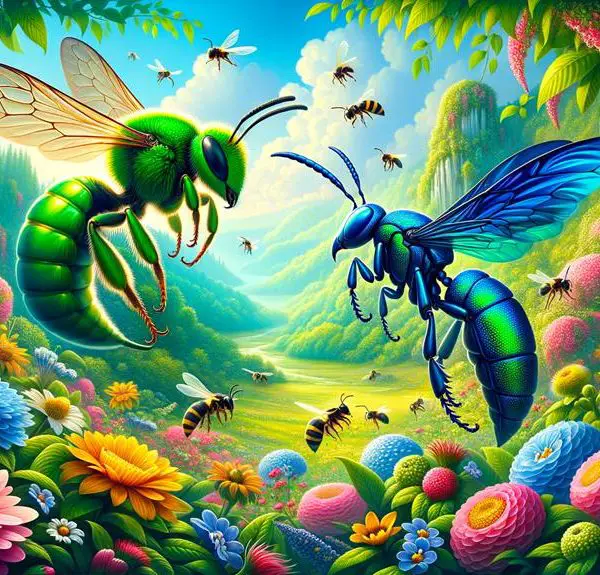Hover over to discover the unexpected role of cuckoo bees in pollination, despite their notorious reputation.
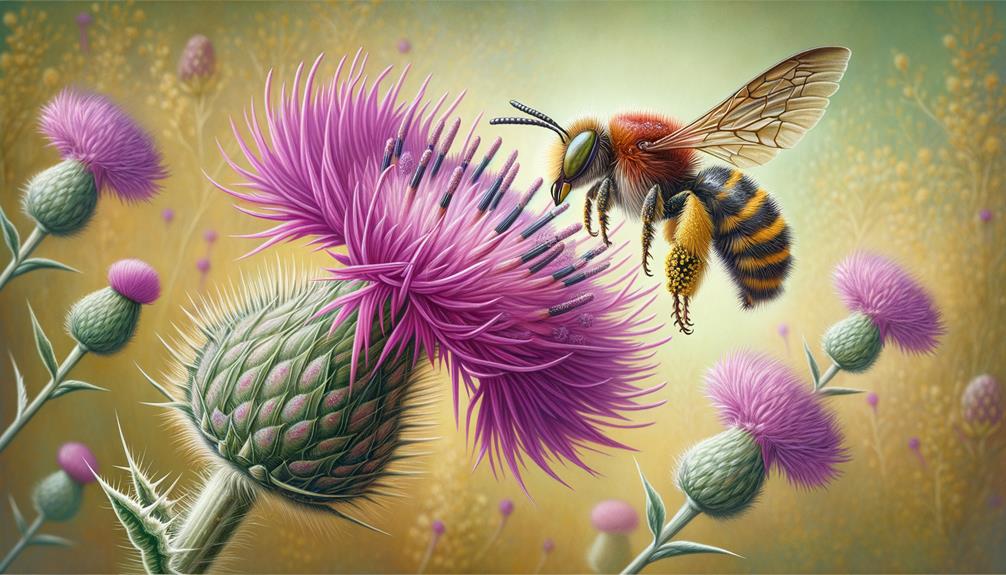
What Do Cuckoo Bees Pollinate?
In the intriguing world of pollinators, cuckoo bees have a somewhat notorious reputation. You might wonder why.
Well, unlike their industrious bee cousins who diligently visit flowers, spreading pollen as they collect nectar, cuckoo bees are known for their 'alternative' lifestyle. They're often found lurking around other bees' nests, waiting for the chance to deposit their eggs and let the host do the heavy lifting.
But does this mean they don't contribute to pollination at all? The answer might surprise you. Let's dig deeper into their role in our biosphere.
Understanding Cuckoo Bees' Role
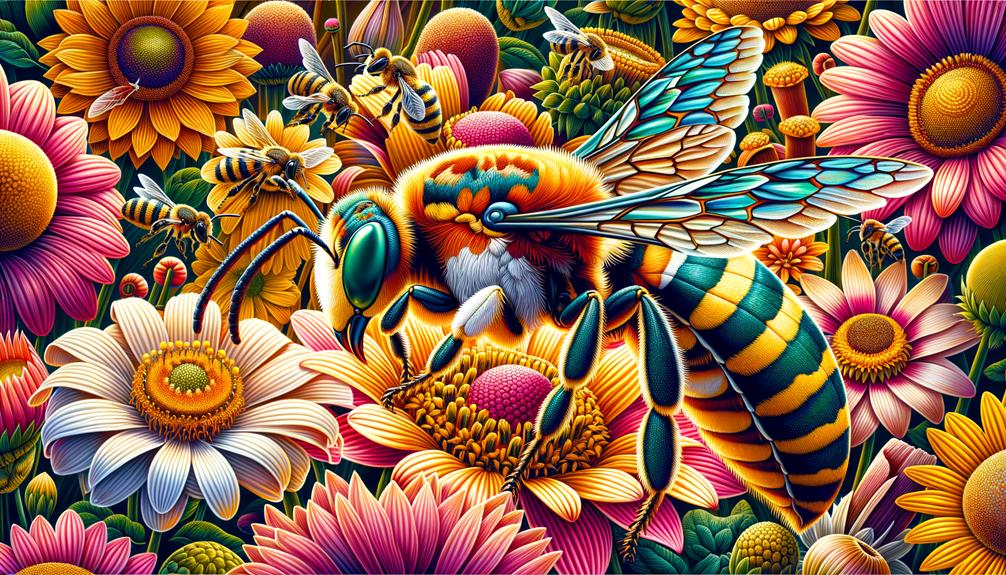
Diving into the intricate world of cuckoo bees, you'll quickly discover their distinct and somewhat parasitic role in the ecosystem, which vastly differs from their pollinating counterparts. Unlike most bees, cuckoo bees don't construct their own nests or even gather nectar and pollen. Instead, they rely on subterfuge and stealth to survive, exhibiting a lifestyle known as cleptoparasitism.
As a cleptoparasite, a cuckoo bee doesn't play a direct role in pollination. They infiltrate the nests of unsuspecting host bees, laying their eggs amongst those of the host. Upon hatching, the cuckoo bee larvae consume the host's stored food resources, thus gaining sustenance at the expense of their hosts.
What's more, these peculiar bees lack the specialized body features for collecting pollen, such as pollen baskets or brushes found in their foraging counterparts. You'll also note their robust and often brightly colored bodies, coupled with a reduced wing venation, which are likely adaptations to their parasitic lifestyle.
This unique approach to survival sets cuckoo bees apart in the bee world, and while they mightn't contribute directly to pollination, they certainly add a fascinating layer of complexity to our understanding of bee behavior and ecosystem dynamics.
Typical Plants Cuckoo Bees Visit
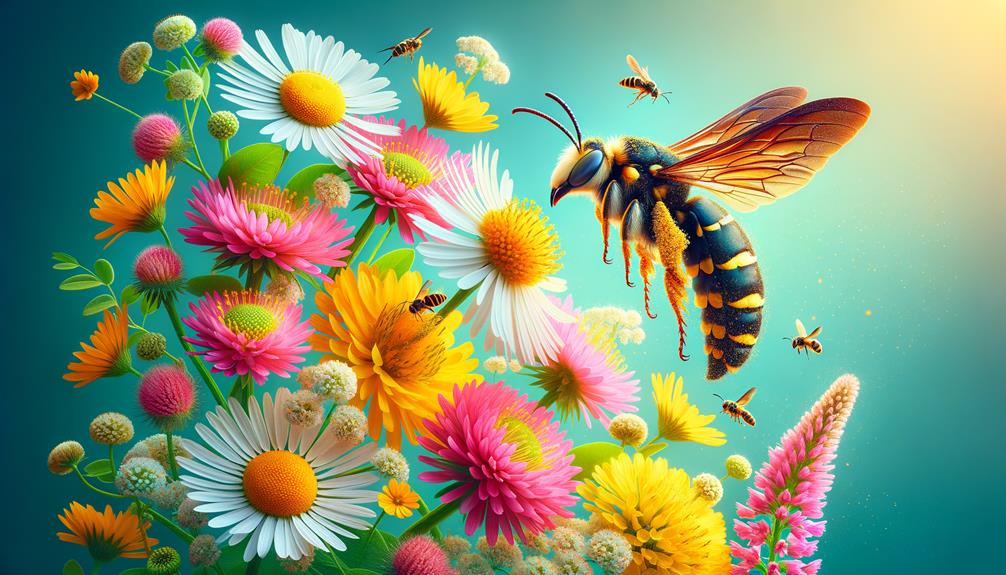
Despite their lack of direct involvement in pollination, cuckoo bees still frequent certain plants, providing an intriguing glimpse into their behavioral patterns. You might find these bees around flowers that other pollinators, such as honeybees, typically visit. This is because cuckoo bees are cleptoparasites, laying their eggs in the nests of other bees, taking advantage of the host bees' pollen collections.
It's essential to understand the favored plants of cuckoo bees to protect these bees' ecological position. Let's take a look at some common plants that cuckoo bees are known to visit:
Plant Name | Description | Importance to Cuckoo Bees |
|---|---|---|
Sunflower | A large, bright yellow flower | Offers a wide landing pad for bees |
Coneflower | A tall plant with a cone-shaped flower | Its nectar attracts many pollinators |
Lavender | A plant with small purple flowers | Its scent attracts a variety of insects |
Daisy | A common garden flower | Provides a rich nectar source for bees |
Cuckoo Bees and Crop Pollination

When considering the role of cuckoo bees in crop pollination, it's important to remember that these bees don't actively carry pollen like other bee species. Instead, their contribution to crop pollination is indirect and is primarily driven by their parasitic lifestyle.
- Cuckoo bees lay their eggs in the nests of other bee species, especially those that are efficient pollinators. This, in turn, can influence the population dynamics of these pollinator bees, indirectly affecting crop pollination.
- By parasitizing the nests of pollen-collecting bees, cuckoo bees can indirectly contribute to crop pollination by forcing these host bees to compensate for the lost offspring by collecting more pollen.
- Lastly, while not their primary role, cuckoo bees can accidentally transfer pollen while they visit flowers for nectar, although this isn't a reliable or significant source of pollination.
Unique Pollination Strategies of Cuckoo Bees

In exploring the unique pollination strategies of cuckoo bees, you'll find that, unlike typical bees, they primarily rely on their intrusive lifestyle rather than active pollen collection. They're known as 'cleptoparasites', meaning they steal the hard-earned provisions of other bees. You see, cuckoo bees don't have pollen baskets or even the necessary body hair to collect and carry pollen. So, they've adopted a different strategy.
They infiltrate the nests of pollen-collecting bees, such as solitary bees, and lay their eggs there. As the cuckoo bee larvae grow, they consume the pollen and nectar stores that the host bee has gathered. It's a crafty, if somewhat underhanded, survival strategy.
Now, you might wonder, 'How does this contribute to pollination?' As the cuckoo bee invades a nest, she inadvertently collects pollen on her body, which can then be transferred to subsequent flowers she visits. Furthermore, the mere act of entering and exiting multiple nests increases the spread of pollen. Thus, despite their parasitic nature, cuckoo bees contribute to pollination, albeit less directly and efficiently than their pollen-collecting counterparts.
Impact of Cuckoo Bees on Biodiversity
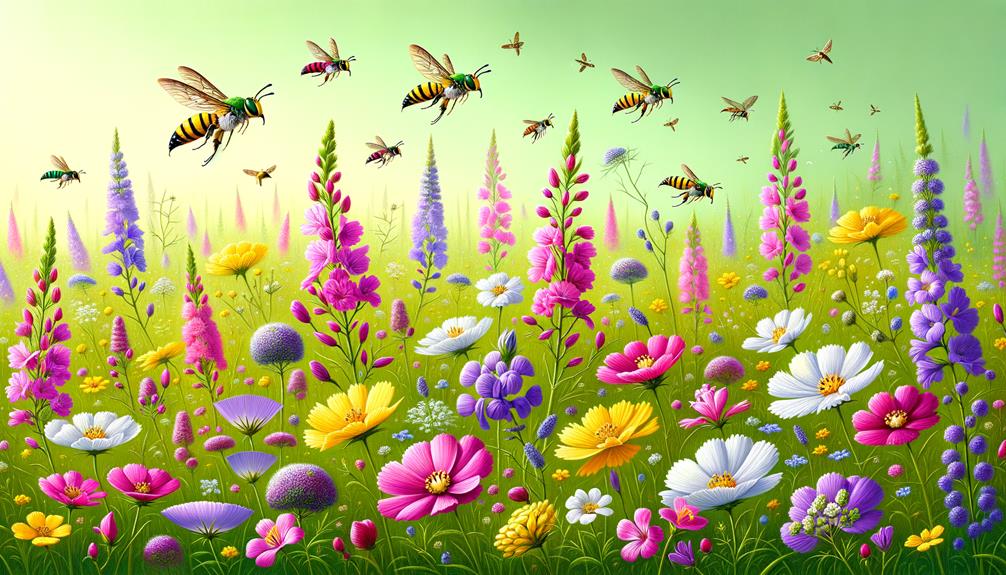
You might be surprised to learn how this unique pollination method of cuckoo bees affects biodiversity. Unlike their industrious relatives, cuckoo bees don't collect pollen for their offspring. Instead, they lay their eggs in other bees' nests, impacting the host populations and the broader ecosystem in several key ways.
- Population Control: Cuckoo bees help in managing the population of other bee species. They're like nature's check and balance system, ensuring no single species dominates the ecosystem.
- Genetic Diversity: By parasitizing different host bees, cuckoo bees indirectly promote genetic diversity. This diversity is crucial for the resilience and adaptability of bee populations to environmental changes.
- Pollination: Despite their parasitic behavior, cuckoo bees still contribute to pollination. While they don't actively collect pollen, it sticks to their bodies as they infiltrate nests, aiding in the transfer between flowers.
In short, the role of cuckoo bees in biodiversity is complex. They're not just parasites – they're integral parts of their ecosystems, contributing to population control, genetic diversity, and pollination. Understanding their impact can help us protect these fascinating creatures and the biodiversity they support.
Conclusion
In summary, you've seen how cuckoo bees play a unique and vital role in pollinating various plants, even crops. Their distinctive foraging habits and pollination methods are indeed intriguing.
The impact of these bees on biodiversity is significant, ensuring the survival and evolution of many plant species.
So, next time you admire a flower or enjoy a fruit, remember – it might just owe its existence to the tireless work of these underappreciated pollinators.


